Restoration at ‘Earth Speed’
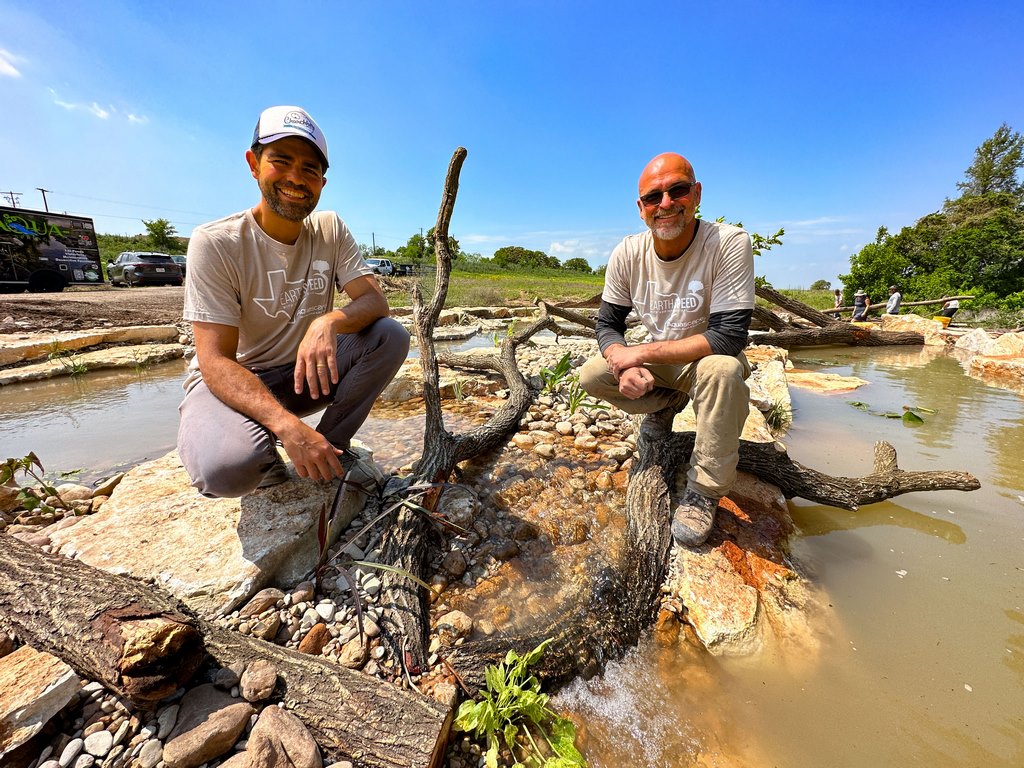

Healing troubled bodies of water is an opportunity to make a positive impact on both terrestrial and aquatic ecosystems, explains Ed Beaulieu, and elevate the human experience in the process. Using this project as a prime example, a set of ponds owned by an A-list celebrity and activist was transformed from a morbid state of deterioration to a vibrant ecological asset.
By Ed Beaulieu
Over the past decade, Adrian Grenier, the TV and movie actor best known for his leading role on the HBO hit series Entourage, has embraced an entirely different kind of real-life part as an outspoken environmental advocate.
Adrian’s list of environmntal credits is impressive. He is founder of the Lonely Whale Foundation, an organization dedicated to ocean health and the wellbeing of marine wildlife, and also a UN Ambassador at the UN Environment Program Clean Seas, a campaign to end marine plastic pollution. He is also World Views’ Chief Earth Advocate, inspiring new perspectives on the planet, and encouraging deeper respect for it as a living organism.
At the heart of all these pursuits is Earth Speed, Adrian’s overall organizational platform dedicated to promoting a new shared view of our relationship with nature.
NATURAL CONVERGENCE
We were thrilled last year when Adrian contacted us to help out on he, and his wife Jordan’s ranch just outside of Austin, TX. He reached out because he was familiar with our philosophy and approach to creating healthy, beautiful and sustainable bodies of water.
It was obvious from our first conversation that we shared the same perspective about the importance of harmonizing with nature, and how to do it, especially in aquatic systems.
Adrian is passionate about his beliefs to say the least. He’s upbeat, gracious and as down-to-earth (literally) as any celebrity you could hope to meet. I personally enjoy listening to he and Jordan describe their philosophy and how those values inspire practical ideas and solutions.
He explains his complex set of beliefs and initiatives by drawing an analogy to the Japanese pottery technique of Kintsugi, in which broken bowls, vases and other artifacts are reassembled using gold to highlight, and celebrate, the cracks. Adrian describes it as “anti-fragile” and “the story of resilience.”
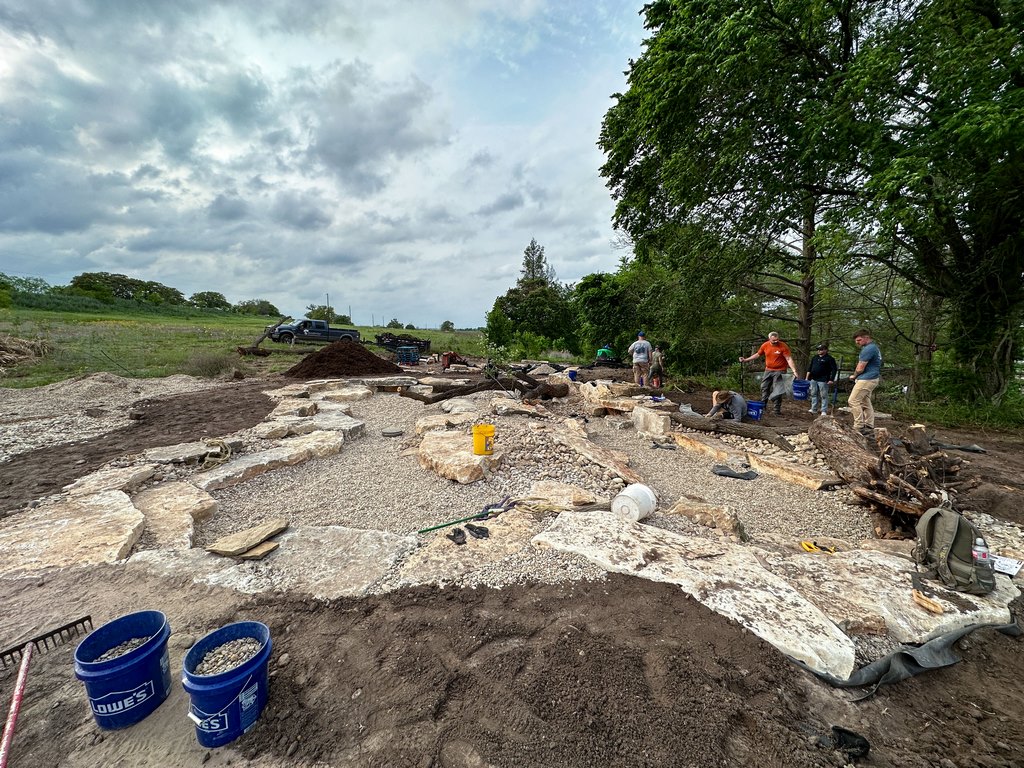
Restoring nature and “living in cadence” with the natural world is the basis for his Earth Speed organization.
FROM THE DEPTHS
The Greniers’ pond, or more accurately a set of three connected ponds, had been in a state of degradation for decades. Even though the system is fed by a spring and constantly turned over, the water quality was awful, primarily the result of years of sediment accumulation on the bottom, leaving the water murky, smelly and largely devoid of life.
I sometimes compare a body of water in this condition to a middle-aged man who could’ve been a professional athlete when he was in his 20s at a time when his body was burning calories and generating energy very efficiently. But as he ages, his body no longer metabolizes all the nutrients he consumes and as a result he put on extra pounds, has little energy, doesn’t look good and does not feel well.
That’s very similar to what happens in a neglected body of water. Rather than utilizing the nutrients in the water to support a thriving ecosystem, the material accumulates and leads to degradation. It becomes the aquatic version of fat and lethargic.
The detritus in the bottom is essentially unused food, calories, that need to be used to foster the health of the environment, rather than degrade it. Basically, when organic material decomposes at the bottom of a body of water, it sucks the dissolved oxygen from the water through the process of eutrophication.
It’s a simple concept, but one that touches all aspects of the environment, in the water and on land. Understanding the natural systems and how to work with them benefits people and nature in a spectrum of ways. All of that comes down to making the wisest use of the resources nature already gives us.
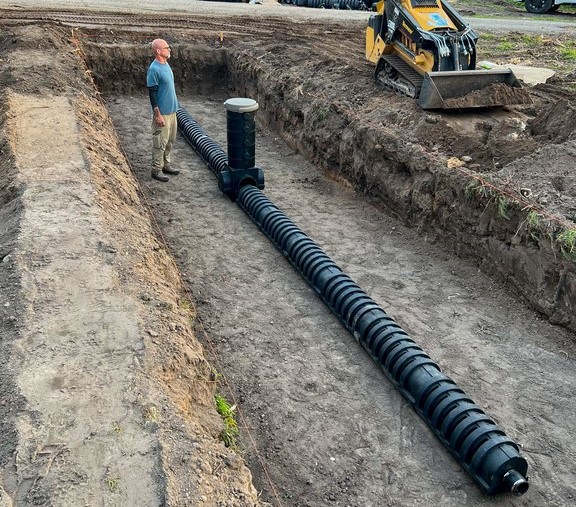
In the case of Adrian’s ponds, we put the system on what amounts to a diet and exercise program, so that it would burn the nutrients rather than allowing them to accumulate. The way you do that is by essentially mimicking natural processes of chemical uptake of plant material, microbiological consumption of waste and the nitrogen cycle.
We installed a biological wetlands filtration system that will metabolize and break down the dissolved nutrients, and a large skimmer area — we call an intake bay — which captures floating debris in a catch basin. The net effect is we’re increasing the metabolism with the filtration system, and reducing the diet with the skimmer. We’re also creating aerobic activity with waterfalls and aeration, which accelerates the biological processes that in turn improve water quality.
HEALING PROCESS
For large bodies of water like these, the improvement does not happen overnight. Just like with the middle-aged man reclaiming his health, the positive change takes time. It’s an ongoing process. After all, it took years of neglect to come to its degraded condition, and it will take time to recover.
Adrian and Jordan did not expect instant results because, as he explained, we should be working at “earth speed,” which requires patience and understanding that natural processes always unfold over time at their own pace.
With that in mind, he wanted to find ways to use the nutrients in the water as a long-term resource. Again, we were on the exact same page. Beneath the wetlands filtration area, we installed a pump and a drainage manifold that directs some of the nutrient-laden water to a nearby permaculture garden and orchard.
That simple system takes all those nutrients, which were a deficit and turns them into an asset driving plant and food production. We also “harvested” the sediment and added it to a large composting system on the property, which in turn will be used as fertilizer.
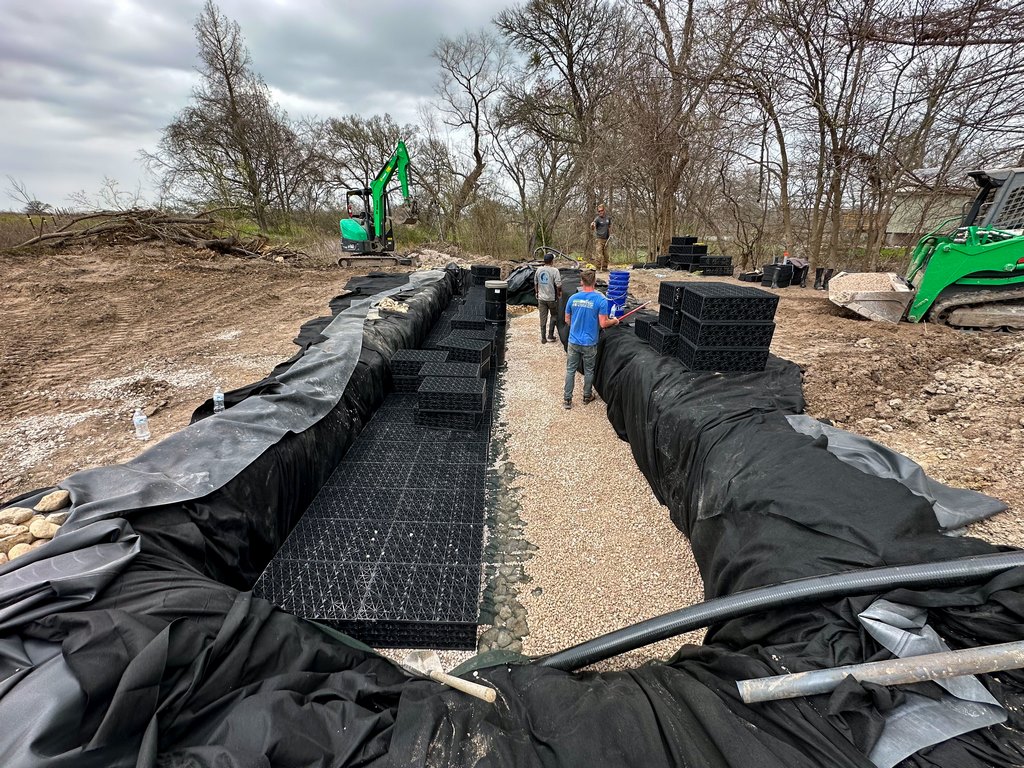
Both measures are extremely simple and straightforward, anyone could do it; but those kinds of moves require thinking differently about the ecosystem, and specifically about how you can use nutrients for multiple beneficial purposes.
This particular transformation is a great example using the water as a way to enliven the entire environment, essentially treating the property and all its interrelated ecosystems as an organism.
COUNTLESS OPPORTUNITIES
It’s exciting to think about the impact this kind of approach could have if it became more accepted and widespread. Over the years, I’ve have seen literally thousands of bodies of water that are in a state of neglect, be they natural features or created as irrigation, settlement or retention ponds, or even water hazards on golf courses, as well as decorative ponds and lakes in parks and private residences, which can all be revised and repurposed.
My educated guess would be that these neglected bodies of water number in the hundreds of thousands in the U.S. We see them everywhere and while each one is different and require different sets of solutions, the basic concept is the same. Through some very basic rehabilitative steps, we are able to create thriving ecosystems in water that is choked with contamination.
These techniques can be used to mitigate pollution, while giving rise to thriving environments with beneficial microorganisms, fish, amphibians, birds and terrestrial animals. These healthy bodies of water become resources that can help cushion the impact of drought while also containing, channeling and cleansing storm runoff.
RESTORATIVE BEAUTY
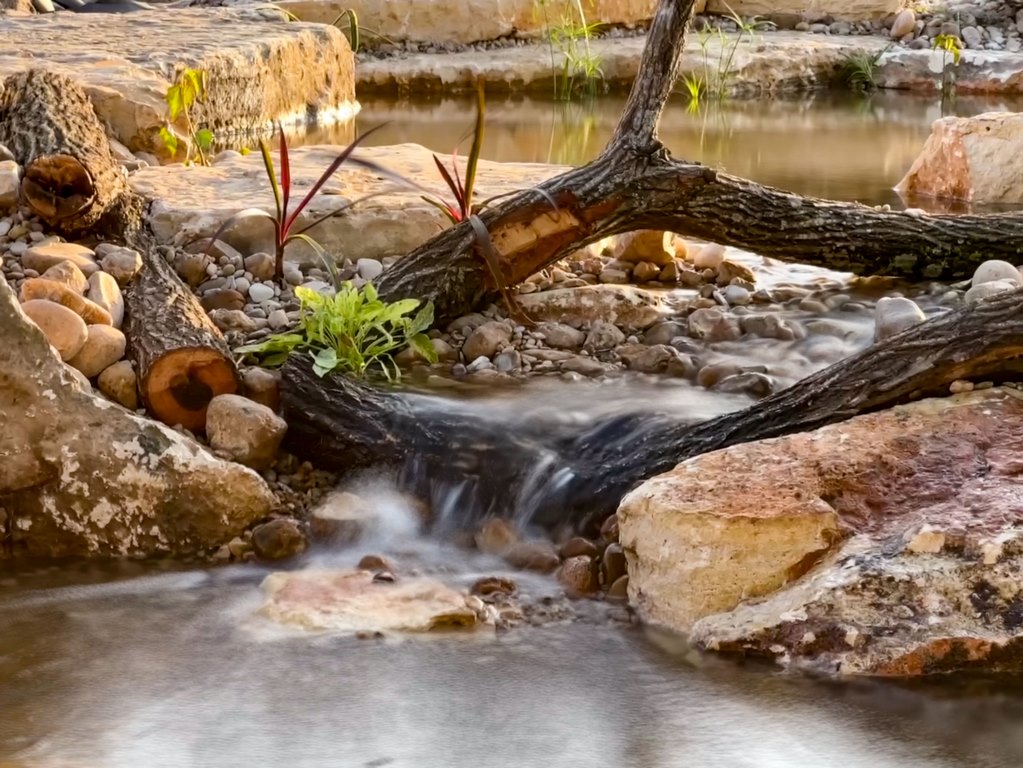
And let’s not forget the resulting watershapes are beautiful and bring happiness and fascination into people’s lives.
Back at the Grenier property, our crews of Aquascape dealer/installers worked some considerable magic beautifying the ponds. Again, we turned nature as the resource. The area is replete with surface limestone slabs, which we conveniently collected from the ranch to use to create edge treatments, viewing areas and waterfalls.
The indigenous stone participates in the ecosystem by providing fissures and cracks where water percolates and creates colonies of beneficial organisms and tiny life forms, as well as giving footholds for algae, moss and other plants.
We even incorporated portions of a fallen oak tree we found on the site.
By making the water more accessible and appealing to the human animals, it will hopefully inspire visitors to value its beauty and natural vitality, and it might even turn into a good place to catch some fish!
When working to heal trouble waters, I’m often reminded of water’s profound impact on the human psyche and overall living experience. Hopefully, Adrian’s work will draw more people to the water’s edge and foster a greater understanding of the beauty and importance of moving at Earth Speed.
Ed Beaulieu is vice president of field research and contractor development for Aquascape, Inc. He has designed and built hundreds of custom-designed ponds from small backyard water gardens to large lakes, commercial water features, and zoological exhibits. He holds a B.S. in Zoology, with an emphasis in Limnology, and concentrated his master’s studies in Marine Biology.
Opening photo: Actor and activist Adrian Grenier poses with the author, taking a moment to enjoy the process of working with nature’s rhythms.
#7









